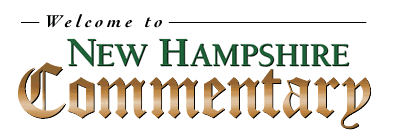

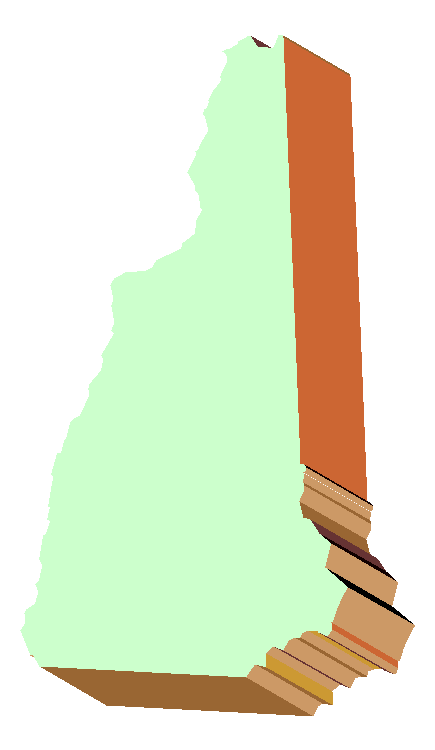 A Little New Hampshire History
A Little New Hampshire History
"The State That Made Us A Nation" -- William M. Gardner, NH Secretary of State
The Treaty of Portsmouth and the Russo-Japanese War -- Dean Dexter
Not the Father's Son -- Sergei Khrushchev Becomes an American -- Dean Dexter
Honoring the Lincoln Brigade is Inappropriate -- Dean Dexter
The Day Little Emma Jane Robinson Left this World -- Frances Eliza Weld Robinson/Dean Dexter Editor
Three New Books Balance View of the New Hampshire Primary -- Dean Dexter Temporarily unavailable
Madame Chiang Kai-shek's Ties to Meredith and New Hampshire's Lakes Region -- Dean Dexter
Gov. Hugh Gregg 1917-2003: Tireless Booster of New Hampshire -- Dean Dexter
Killing Babies is a Bad Choice -- Dean Dexter Temporarily unavailable
Award Winning New Artist Craig Pursley at the American Heritage Gallery, Bath, NH
_________________________________________________
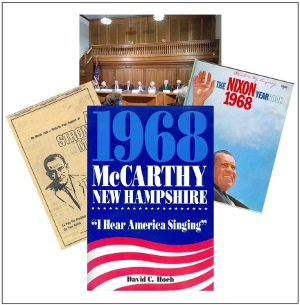
A video of
a forum commemorating the 50th anniversary of the historic 1968 NH First-in-the
Nation Presidential Primary held at the State House on March 12, 2018 is
available for viewing online at this
link:
_________________________________________________
John Gilbert Winant, NH Governor, US Ambassador to England during World War II: Here.
Governor John G. Winant 1889-1947 -- Harvard Magazine, Nov-Dec, 2000 (Also: sample Winant correspondence from the FDR Library.)
![]() Video:
Governor Hosts John Gilbert Winant Forum for Lynne Olson and Rivington Winant
Video:
Governor Hosts John Gilbert Winant Forum for Lynne Olson and Rivington Winant
Nathan Clifford, associate justice, US Supreme Court, Rumney, NH native. Graduate of New Hampton School, and Joan Trimble-Smith's portrait of Clifford in the US Supreme Court building
![]() Three Men From
New Hampton School Helped Elect Lincoln -- Frederick Smith,
headmaster emeritus
Three Men From
New Hampton School Helped Elect Lincoln -- Frederick Smith,
headmaster emeritus
![]() A Sunday Visit with J. D. Salinger
-- Edward Jackson Bennett
A Sunday Visit with J. D. Salinger
-- Edward Jackson Bennett
New Hampshire State Seal Designs through the years
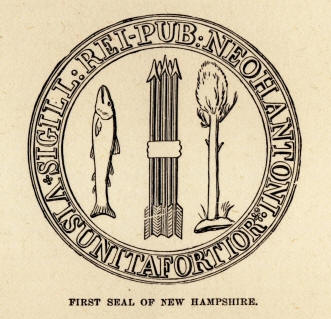
1775
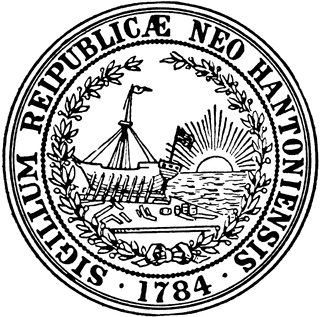
1860s
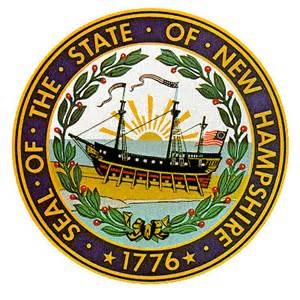
New Hampshire State Sean, current day
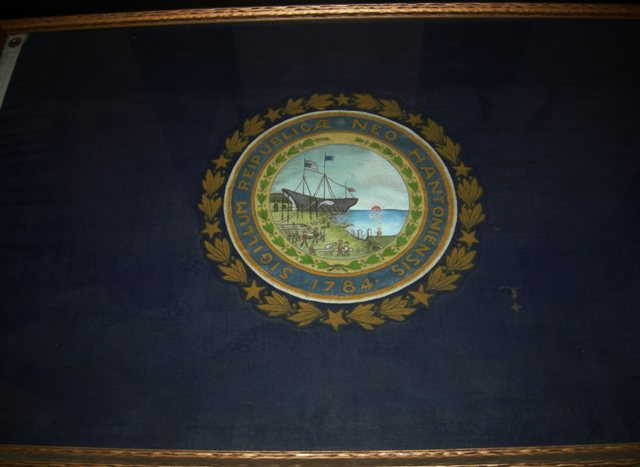
Framed New Hampshire State Flag, 1909 version, in the homestead of late Governor and US Senator Henry W. Keyes, N Haverhill, NH - Dean Dexter Photo
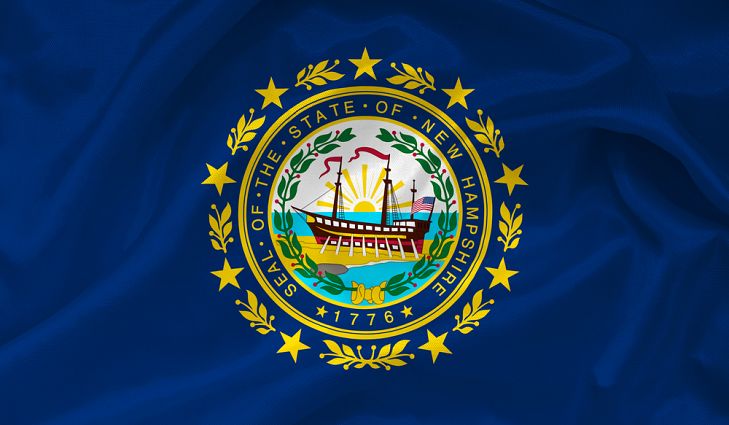
New Hampshire State Flag, current day.
New Hampshire's first seal, created in 1775, consisted of a pine tree, a fish, and a set of five arrows. The arrows stood for the five counties at the time, while the pine tree and fish represented the state's major economic resources. In 1784, when the state's new constitution became effective, the legislature decided to change the seal to keep up with the changing times. The coastal town of Portsmouth had become a thriving ship building center, and the legislature wanted to portray this industry. So, with a rising sun in the background, the new design would feature a ship on stocks. However, as time went on, this 1784 design became a victim of artists' whims and fancies. The scene continually changed. People appeared on docks, and barrels of rum materialized. In 1931, the legislature voted to regain control of the seal's design. Today, the seal is unchanging (as seen on the state flag at right). The frigate Raleigh, one of the first ships that the Constitutional Congress authorized for the nation's navy, graces the center of the seal. The date on the bottom of the seal now reads 1776. The rum barrels are gone, the sun rises over the Atlantic Ocean, and a wreath of laurel frames the entire scene.
The United States Ship Raleigh
graces the Great Seal of the State of New Hampshire. Depicted on its stocks at
Portsmouth, the U.S.S. Raleigh was one of the first 13 frigates
commissioned by the Continental Congress in 1776 for use in the Revolutionary
War.
![]() Link
Link
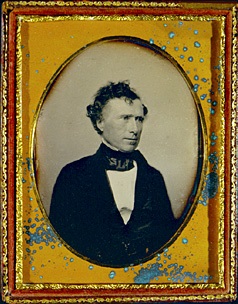 Franklin Pierce, 14th President of the
United States, 1853-1857 - New Hampshire's only president.
Born Hillsborough, New Hampshire,
November 23, 1804. Died Concord, New Hampshire October,
1869.
Franklin Pierce, 14th President of the
United States, 1853-1857 - New Hampshire's only president.
Born Hillsborough, New Hampshire,
November 23, 1804. Died Concord, New Hampshire October,
1869.
![]() Look
here for a
review of Peter Wallner's excellent two volume Pierce biography.
Look
here for a
review of Peter Wallner's excellent two volume Pierce biography.
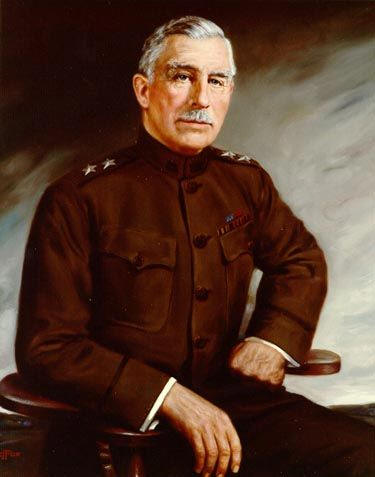
Benevolent Imperialist --
C-Span interview with Biographer
Peter
McCallum
What Leonard Wood can teach today's
America about running an empire.
Biography of New Hampshire's General
Leonard Wood, born October 9, 1860 Winchester, New Hampshire. Candidate for
President in the 1920 New Hampshire First in the Nation Presidential Primary.
General Leonard Wood's Biography in Wiki
Portrait Courtesy of the U.S. Army Center For Military History
New Hampshire and the Observance of Thanksgiving
The first Thanksgiving was celebrated in 1621 when Governor William Bradford proclaimed a three-day feast after a successful harvest, following the devastating winter where over half their members died. But do you know the role New Hampshire has played in this most American of holidays?
As early as 1781, the Continental Congress in Philadelphia proclaimed November 28 “as a day of solemn thanksgiving to God for all his mercies,” and sent copies of the document to each colony (see below). New Hampshire’s first Governor, Meshech Weare (the official title then was “President”), ordered the proclamation “forthwith printed,” and delivered far and wide “to the several worshipping assemblies in this state, to whom it is recommended religiously to observe said day, and to abstain from all servile labor thereon.” So much for the mythology of a “separation of church and state” mindset among the nation’s founders.
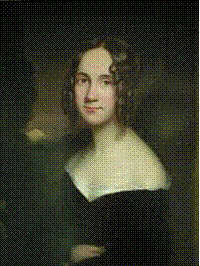
New Hampshire's Sara Josepha Hale
In fact, days of “thanksgiving, fasting, and prayer” were common in the founding era, and a holiday commemorating the Pilgrim’s sacrifices after harvest was popular throughout the 13 colonies, although not observed on a common date. George Washington was the first president to declare a national Thanksgiving Day under the new Constitution in 1789.
Thanksgiving remained popular throughout the country during the 1800s, but it was the 35 year crusade of a New Hampshire woman, Sara Josepha Hale of Newport (above), author of the anti-slavery best-seller, Northwood, and a powerful editor of a national magazine, that persuaded President Abraham Lincoln, who Sara had personally lobbied, to declare the last Thursday in November a national holiday in 1863.
In an effort to extend the Christmas shopping season following the Great Depression, President Franklin Roosevelt, a Mayflower descendant, changed the observance to the third Thursday in November. After much controversy, however, Congress permanently changed the date back to the fourth Thursday in 1941.
— Dean Dexter
From the Fall 2008 Shallop, a publication of the Society of Mayflower Descendants in the State of New Hampshire
Return to NH Commentary Home Page
© 2003 NH Commentary.Com
P.O. Box 706
Concord, NH 03302